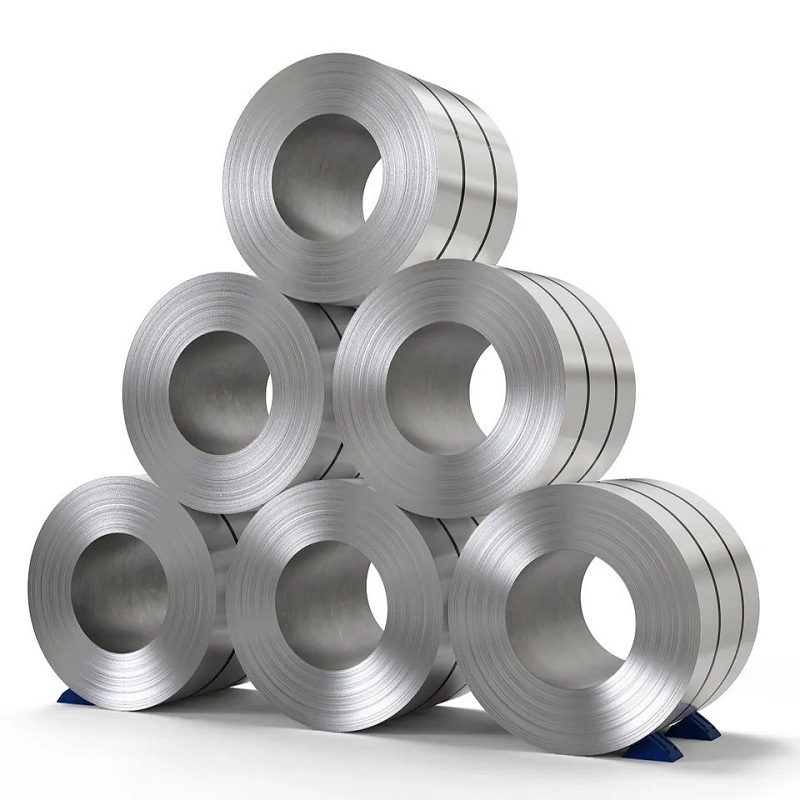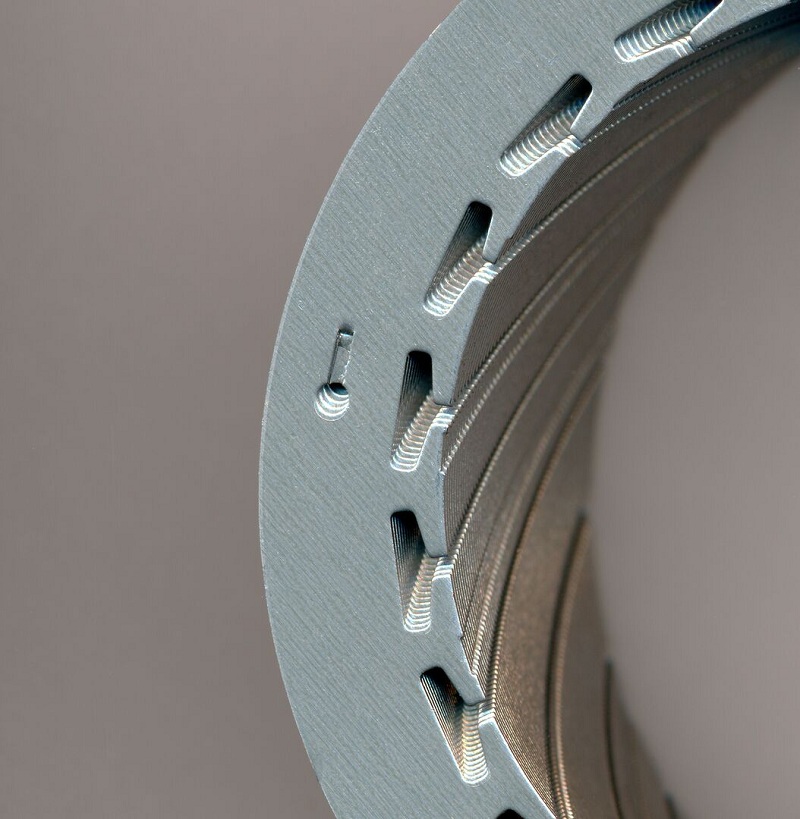
The chemical composition has great influence on the metallographic structure, mechanical properties, physical properties and corrosion resistance of steel. Whether added intentionally, or unintentional alloying elements brought in during steelmaking, will have an impact on these properties. Alloying elements such as chromium, molybdenum, and nickel are in replacement positions in the lattice. They replace the iron in the top corners of the austenite lattice and in the center of the six sides of the cube. Because of their small size, carbon and nitrogen are located in the Spaces between the atoms of the lattice. They generate enormous strain in the lattice and, therefore, become effective hardening elements. Alloying elements such as chromium, molybdenum, and nickel are in replacement positions in the lattice. That is, they replace the iron in the top corner of the austenite lattice and in the center of the six sides of the cube. Because of their small size, carbon and nitrogen are located in the Spaces between the atoms of the lattice. They generate enormous strain in the lattice and, therefore, become effective hardening elements.
Alloying elements have different effects on the properties of steel, sometimes beneficial and sometimes harmful. Choosing the composition or grade of a steel often requires the designer or materials engineer to sacrifice some of one property for the maximum of another. The following is an introduction to the functions of the important alloying elements of austenitic stainless steel.
Chromium is an alloying element that can make stainless steel "rust free". At least 10.5% chromium is required to form the surface passivation film characteristic of stainless steel. The passivation film can make the stainless steel effectively resist the erosion of corrosive water, a variety of acid solutions and strong oxidizing high-temperature gases. When the chromium content exceeds the 10.5% threshold, corrosion resistance to a variety of environments is enhanced. Therefore, the chromium content of many brands is much higher than this value. For example, the chromium content of 304 stainless steel is 18%, and the chromium content of high-performance austenitic stainless steel is as high as 20%-28%.

The main function of nickel is to form and stabilize the austenite phase. If there is no 8%Ni, 304 will not become austenitic stainless steel, nor will it have the mechanical properties that austenite should have. In that case, it is a ferritic stainless steel whose strength and toughness are not at the same level. As more chromium or other ferrite forming elements are added to the steel, additional nickel is needed to maintain the austenitic structure. High performance austenitic stainless steel contains high chromium and high molybdenum, and the nickel content should reach about 20% to ensure the austenitic structure. Nickel can improve the corrosion resistance to some reducing acids, and when the nickel content is greater than about 20%, the stress corrosion fracture resistance is improved. Nickel also reduces the work hardening rate during cold deformation, so alloys used for deep drawing, spinning, and cold heading generally have a higher nickel content.
Molybdenum can improve the resistance of steel to pitting and crevice corrosion in chloride environment. Under the combined action of molybdenum and chromium, especially nitrogen, the performance of steel in these environments is improved. This synergistic effect makes high performance austenitic stainless steels with strong resistance to pitting and crevice corrosion. Molybdenum can also improve the corrosion resistance of steel in reducing environments such as hydrochloric acid and dilute sulfuric acid. The minimum molybdenum content of austenitic stainless steel is about 2%, such as 316 stainless steel. High performance austenitic stainless steel with the highest alloy content has a molybdenum content of up to 7.5%. Molybdenum contributes to the formation of the ferrite phase and affects the phase equilibrium. It participates in the formation of several harmful secondary phases, and can form unstable high-temperature oxides, which adversely affects the high-temperature oxidation resistance. These factors must be taken into account when using molybdenum-containing stainless steel.
Carbon stabilizes and strengthens the austenitic phase, so carbon is a useful alloying element for stainless steel used in high-temperature environments such as boiler tubes. The carbon content of most austenitic stainless steels is usually limited to the lowest attainable level. Standard low-carbon grades for welding (304L, 201L and 316L) are limited to 0.030% carbon. Some high alloy high performance grades even limit the carbon content to 0.020%.

Nitrogen stabilizes and strengthens the austenite phase and can slow down the formation of the secondary phase. Both standard grade and high performance austenitic stainless steels contain nitrogen. Whether it is standard grade or high performance austenitic stainless steel, nitrogen can provide strength and slow down carbide sensitization and secondary phase formation. Nitrogen also helps to improve resistance to chloride pitting and crevices corrosion, so some of the best corrosion resistant high-performance austenitic stainless steels have nitrogen content as high as 0.5%.
Steel mills use manganese to deoxidize molten steel, so a small amount of manganese remains in all stainless steel. Manganese can also stabilize the austenitic phase and improve the solubility of nitrogen in stainless steel. Therefore, some nickel in 200 series stainless steel is replaced with manganese to increase nitrogen content and improve strength and corrosion resistance. Manganese is also added to some high-performance austenitic stainless steels to achieve the same effect. Copper can improve the corrosion resistance of stainless steel in reducing acids, such as certain mixed solutions of sulfuric and phosphoric acid. Copper is added as an alloying element in some high-performance austenitic stainless steels specifically designed for these environments.
In general, silicon is a beneficial element of austenitic stainless steel because it can improve the corrosion resistance of steel in concentrated acid environments and highly oxidized environments. Silicon, like manganese, can also be used to deoxidize molten steel, so a small amount of oxide impurities containing silicon, manganese and other deoxidizing elements will always remain in the steel. If the number of inclusions is too large, it will adversely affect the surface quality and polishability of the product.
Sulfur has a mixed effect on the properties of stainless steel. The most important beneficial effect is to improve the machinability; The main harm is to reduce the hot processability, increase the amount of manganese sulfide impurities, resulting in stainless steel pitting resistance is reduced. High performance austenitic stainless steel itself is difficult to hot work, so the sulfur content is controlled at the lowest possible level, about 0.001%. Normally, sulfur is not added as an alloying element to high performance austenitic stainless steel. However, the sulfur content of standard grades of stainless steel is generally high (0.005%~0.017%), in order to improve the weld penetration of self-fusion welding and improve the machinability. Phosphorus is a harmful element, which can adversely affect the hot processability of forging and hot rolling. It also increases the probability of hot cracking during post-welding cooling. Therefore, the phosphorus content is always controlled at the lowest attainable level.
Niobium and titanium are two very effective carbide forming elements, which have the effect of reducing carbon content and reducing sensitization. Niobium carbide and titanium carbide can improve the high temperature strength. 347 and 321 containing Nb and Ti are commonly used in boilers and refining equipment to meet high temperature strength and weldability requirements. They are also used in some deoxidation processes and, as a result, sometimes remain in high-performance austenitic stainless steels.
Application Prospects of Flexible Cores in Special Transformers
2025-01-03The difference between 304 and 316 stainless steel
2021-05-19Development Status of High end Silicon Steel Market
2025-11-10Hidden Champions in Steel The Magnetic Heart that Drives Modern Industry
2025-09-18EU Extends Preliminary Anti-Dumping Investigation Period of Stainless Steel Cold Rolling to China
2020-12-29Research and Market Outlook of Environmentally Friendly Core Materials
2024-12-19






